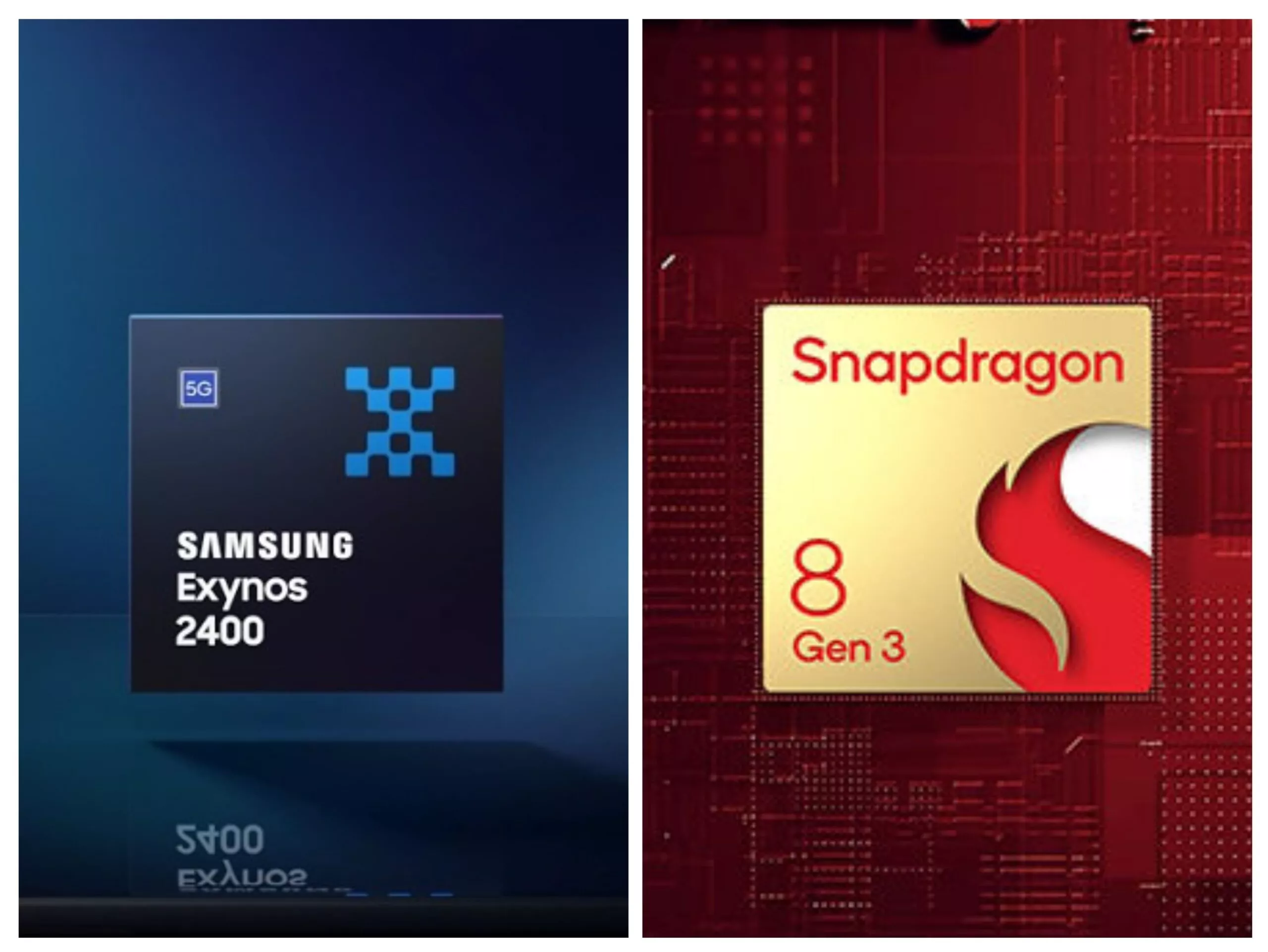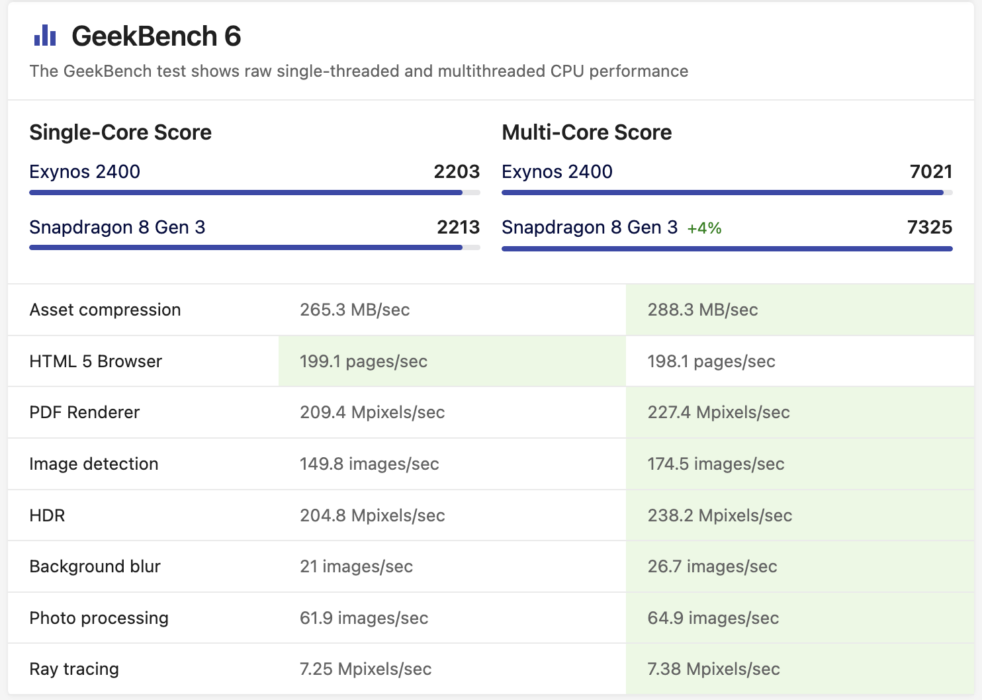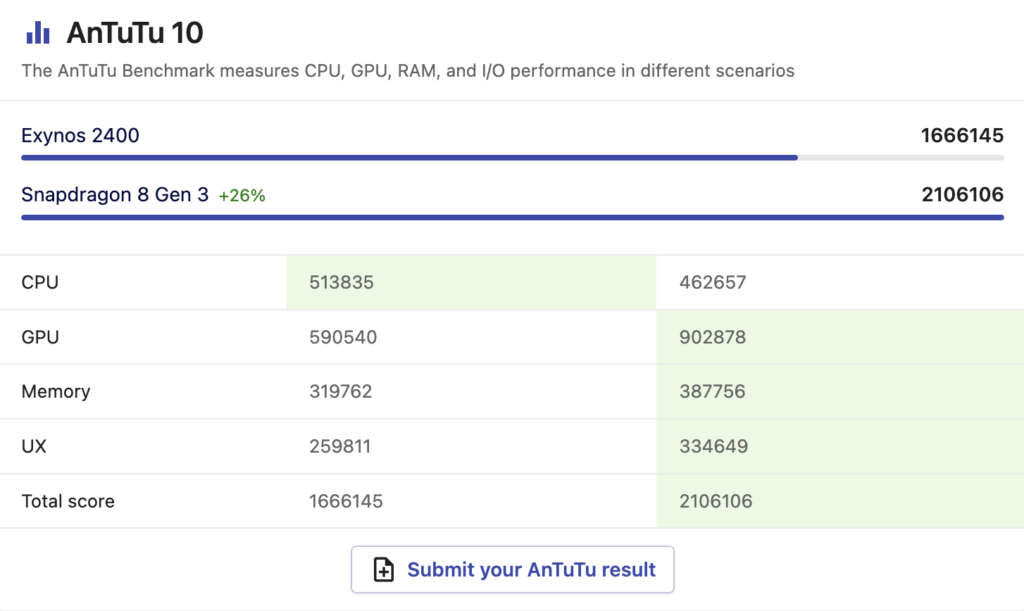Qualcomm Snapdragon 8 Gen 3 Vs Exynos 2400: What’s The Difference?

Samsung’s S24 series is finally here, and so is the Exynos 2400. This development has sparked significant interest, given that Exynos has historically lagged behind Qualcomm not only in speed but also in temperature and efficiency. As a result, there is one question on everyone’s mind: Is the Exynos 2400 comparable to the Snapdragon 8 Gen 3? Let’s find out.
Exynos 2400 vs Snapdragon 8 Gen 3: Hardware
To put things into perspective, the Exynos 2400, built on Samsung’s 4nm LPP+ process, is a deca-core (10 cores) chip. It boasts one Cortex-X4 core running at 3.2 GHz, two Cortex-A720 cores at 2.90 GHz, three medium-performance Cortex-A720 cores at 2.6 GHz, and four efficient Cortex-A520 cores at 2.0 GHz, paired with the Xclipse 940 GPU.
In contrast, the Snapdragon 8 Gen 3, manufactured on TSMC’s 4nm process, houses a high-performance Cortex-X4 core running at 3300 MHz, five medium-performance Cortex-A720 cores, and two efficient Cortex-A520 cores operating at 2260 MHz, along with the Adreno 750 GPU.
CPU Performance

While TSMC’s 4nm process appears superior to Samsung’s, Geekbench scores indicate a less substantial difference. The Exynos 2400 scored 2,203 in the single-core test and 7,021 in the multi-core test. In comparison, the 8 Gen 3 scored 2,213 in the single-core test and 7,325 in the multi-core test, suggesting approximately a 5% difference in the CPU department.
GPU Performance

Samsung claims the Xclipse 940 GPU, based on AMD RDNA 3 architecture, is about 70% faster than its predecessor. Meanwhile, the Adreno 750 GPU is touted as one of the best on the market, even surpassing the one in Apple’s A17 Pro chip, which is capable of running native PC games.
However, the specific performance metrics of the 940 GPU remain unclear since preliminary tests indicate a staggering 25% performance deficit when compared to the Adreno 750.
Efficiency
Exynos’s biggest problem has always been efficiency and thermal management. Despite the development of a new Fan-Out Wafer-Level Packaging (FOWLP) technique for improved thermal management, early reports hint at a potential problem. In one AnTuTu test, the Exynos 2400’s temperature rose by 14 degrees, while the Snapdragon 8 Gen 3’s temperature rose by 8 degrees.
Image Signal Processing
While Samsung tries to maintain consistency in images across various variants of the phone, disparities exist due to each processor having a different Image Signal Processor (ISP). However, to understand the photo/video differences between the 8 Gen 3 and the Exynos 2400, we will need to wait until the devices are available to the public.






